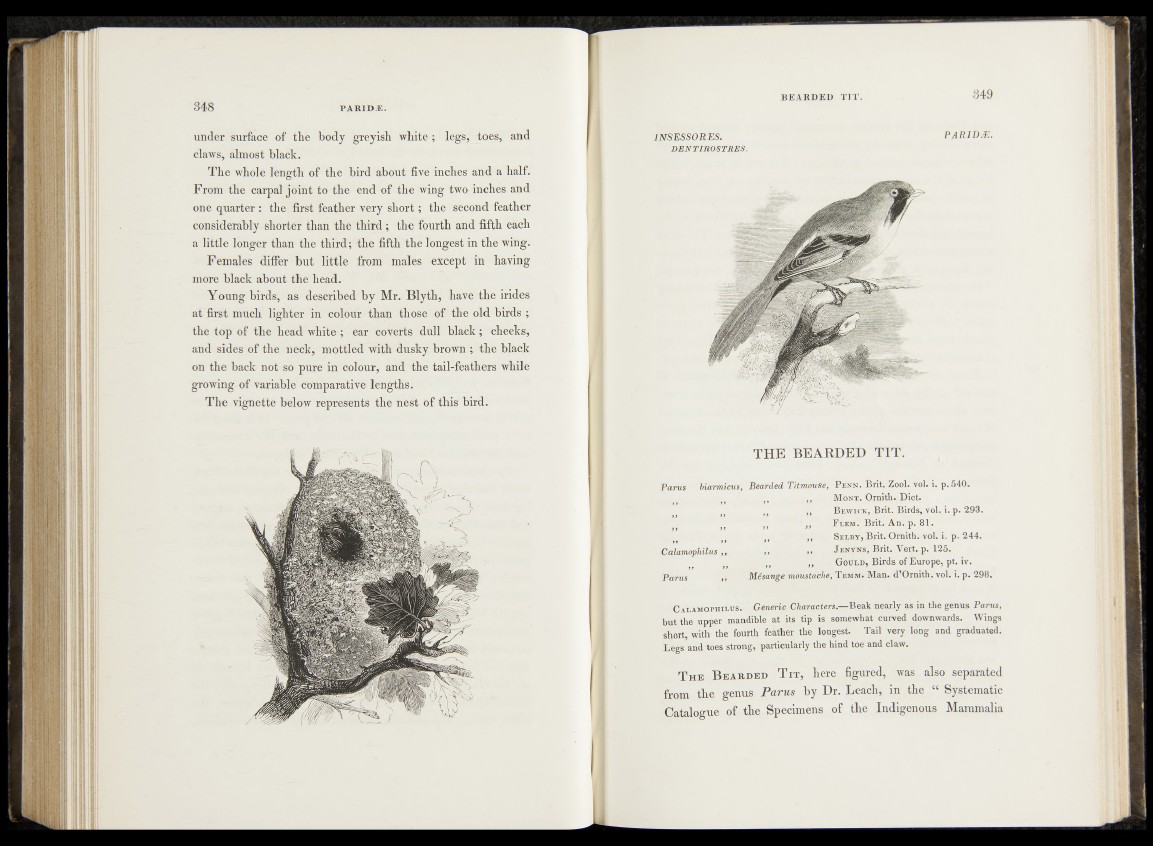
SËË
348 P A R IDÆ .
under surface of the body greyish white ; legs, toes, and
claws, almost black.
The whole length of the bird about five inches and a half.
From the carpal joint to the end of the wing two inches and
one quarter : the first feather very short; the second feather
considerably shorter than the third; the fourth and fifth each
a little longer than the third; the fifth the longest in the wing.
Females differ but little from males except in having
more black about the head.
Young birds, as described by Mr. Blyth, have the irides
at first much lighter in colour than those of the old birds ;
the top of the head white ; ear coverts dull black; cheeks,
and sides of the neck, mottled with dusky brown ; the black
on the back not so pure in colour, and the tail-feathers while
growing of variable comparative lengths.
The vignette below represents the nest of this bird.
B E A R D E D T IT . 349
1NSESSORES. PARIDÆ.
D ENT IRO STR ES .
TH E BEARDED T IT .
Parus biarmicus, Bearded Titmouse, P enn. Brit. Zool. vol* i. p. 540.
,, M ont. Omith. Diet.
" ,, B ewick, Brit. Birds, vol. i. p. 293.
tl „ F lem. Brit. An. p. 81.
M ,, Selby, Brit. Ornith. vol. i. p. 244.
Calamophilus ,, ,, n J enyns, t> ,, Brit. Vert. p. 125. Gould, Birds of Europe, pt. iv.
p arns „ Mésange moustache, T emm. Man. d’Ornith. vol. i. p. 2 9 8 .
C alamophilus. Generic Characters.—Beak nearly as in the genus Parus,
but the upper mandible at its tip is somewhat curved downwards. Wings
short, with the fourth feather the longest. Tail very long and graduated.
Legs and toes strong, particularly the hind toe and claw.
T he B e a r d e d T it, here figured, was also separated
from the genus Parus by Dr. Leach, in the “ Systematic
Catalogue of the Specimens of the Indigenous Mammalia